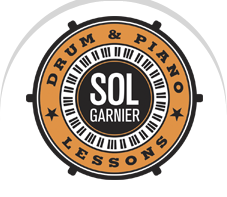Did you know that the ten fingers you have are all different from each other? You discover and struggle with that fact when you play the piano. Normally the thumb and index of the right hand are, by far, the most practical, precise and strongest pair in the hand. Maybe, but is it the fastest? Speed between two digits is of utmost importance in piano playing. If you need to spit out a trill, you’ll see sooner rather than later that the thumb/index combination is not the best one. Even the pinky and the ring finger are faster and more agile. The middle/ring finger, the index/middle finger, the index and the ring finger are naturally very fast. We can reach blazing speed with almost no training. All we need is to get a little impatient, and those fingers will drum up a quick roll on the go.
But not everything is about speed. You also need to be able to stretch your hand. And you also need to stretch the space between each finger. Ah! That’s a painful one. Stretching the thumb and index is not a problem. That’s the easiest one. But what about the space between clumsy ring finger and little pinky finger? Yes, sometimes you need that gap, that little extra stretch, that impossible reach. Those fingers almost never cooperate. Any stretching involving the ring finger is torture.
I’ll keep going. How about independence? That’s the art of moving one part without moving the other. Simple test, put the tip of your fingers on one surface. Now move the index and the ring finger without moving the rest of your hand. It’s doable, but not very easy. Sometimes a certain song requires a steady tap on the thumb while the other fingers of the same hand knit up a little melody. That’s fun!
I could go on and on like this for a long time. I could talk about dynamics: often a melody that needs to pop will be given to a fragile pinky (The Moonlight Sonata, for example). Or the fact that almost none of us are ambidextrous. You do not know what the word means? Ambidextrous describes someone that uses both his/her hands for all tasks. For example, they write with the right and the left hand. Playing tennis with those people is exhausting: they do the playing, switching the racket from one palm to the other, while you do the running. Well in piano it means that not only do we have certain particularities due to the built of our hands, we also must multiply those particularities by two since we also have a dominant hand and a clumsy one. But that’s another can of worms for another blog.

